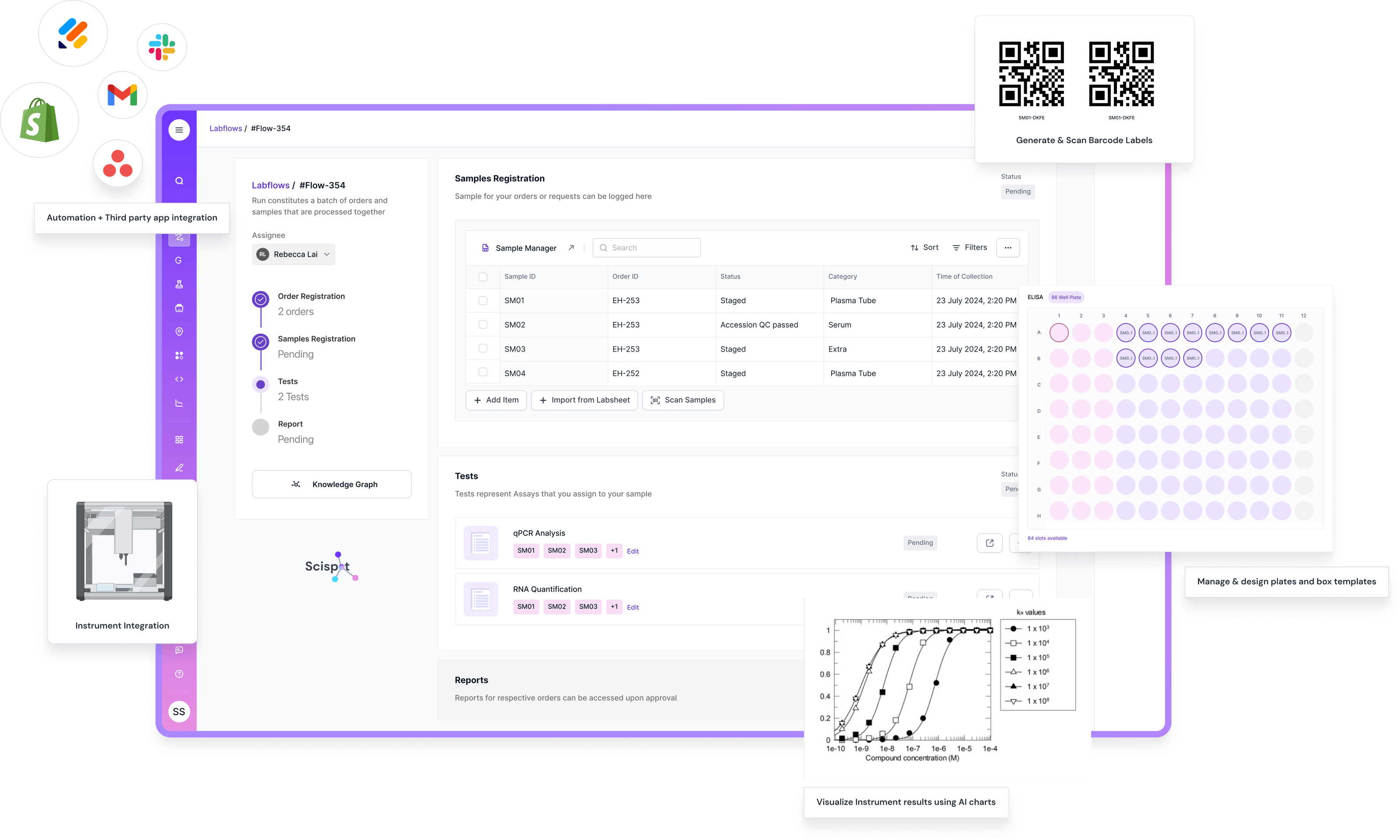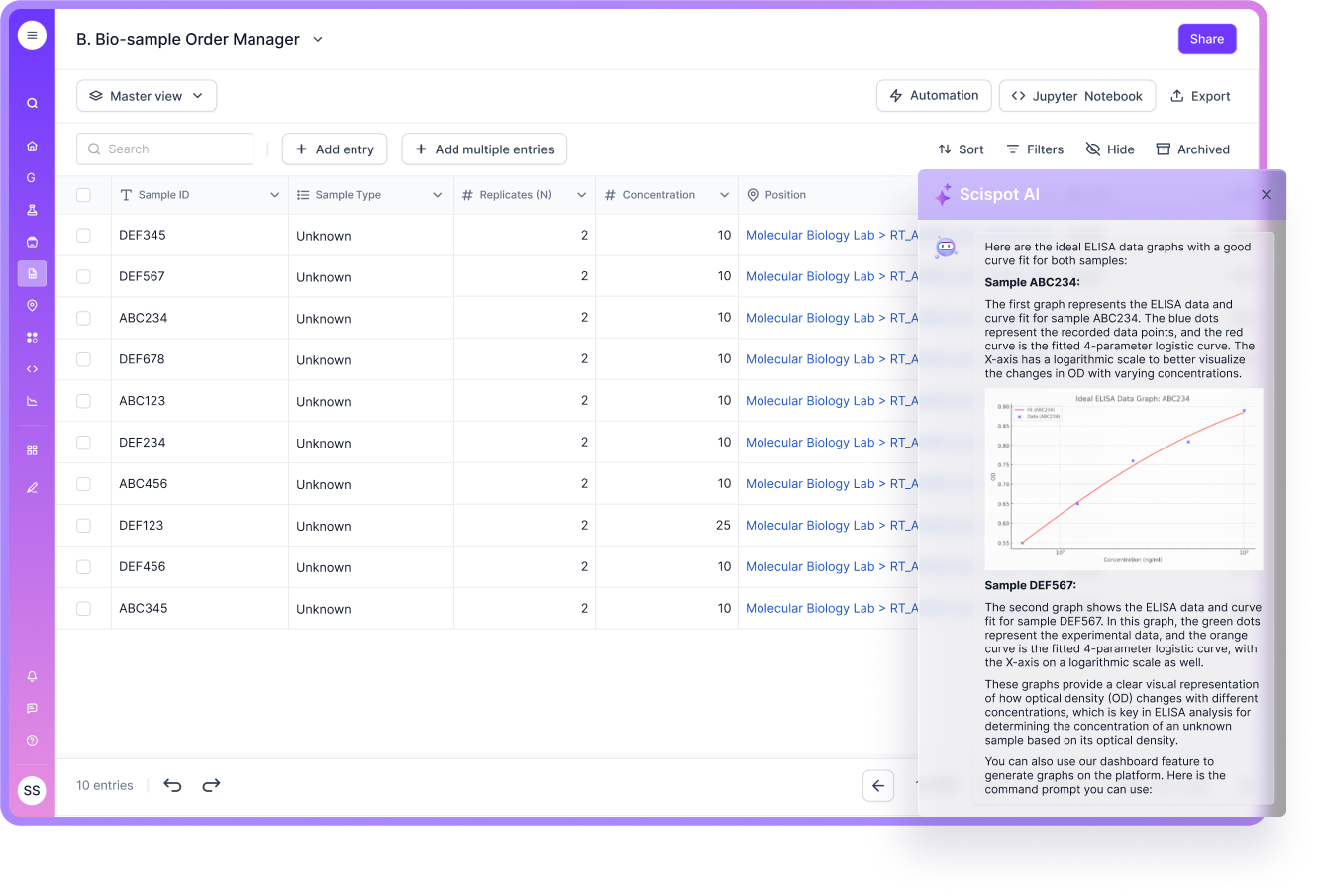Laboratories worldwide are experiencing a structural shift toward digital standardization, where a Laboratory Information Management System (LIMS) has become as fundamental to scientific operations as an ERP is to manufacturing. The next decade marks a transition from static recordkeeping systems to intelligent, adaptive platforms that can manage data, automate decisions, and interact with other digital lab agents.
According to Grand View Research, the global LIMS market is valued at USD 2.44 billion in 2024 and is expected to reach USD 3.56 billion by 2030, growing at a CAGR of 6.22 percent [1]. MarketsandMarkets provides a broader estimate, projecting the market to grow from USD 2.88 billion in 2026 to USD 5.19 billion by 2030—a faster 12.5 percent CAGR [2]. Between these forecasts, a realistic midpoint scenario implies sustained annual growth between 7 and 9 percent, supported by regulatory compliance, AI-driven automation, and the expansion of cloud-native platforms.
Defining the Modern LIMS
A LIMS is no longer a passive repository for sample metadata; it is the nervous system of a digital laboratory. It orchestrates samples, instruments, personnel, and workflows in real time. Core functions—sample tracking, instrument connectivity, chain-of-custody management, audit-ready documentation, and analytics—now extend beyond traditional on-premise setups to hybrid or fully cloud-native architectures [3].
Regulatory frameworks define this evolution. FDA 21 CFR Part 11 and GLP 21 CFR Part 58 require verifiable electronic signatures, immutable audit trails, and structured record retention [13][14]. In healthcare and diagnostics, HIPAA ensures data protection for patient information [15]; in Europe, GDPR and EU Clinical Trials Regulation (CTR 536/2014) enforce transparency and traceability in trial and biobank data [16][17]. These rules turn compliance into an architectural necessity that only robust LIMS platforms can guarantee.

Market Growth Drivers
The most powerful tailwind for the LIMS sector is regulatory modernization. Governments and accreditation agencies now demand digital traceability across experiments and production cycles. Laboratories that once depended on paper or spreadsheets cannot sustain compliance with frameworks like ISO 17025 or CLIA without adopting digital systems [1].
Another driver is the explosion of multi-omic and high-throughput screening data. Instruments now generate terabytes daily, and integrating these datasets manually is untenable. Advanced LIMS platforms connect directly to Chromatography Data Systems (CDS), Electronic Lab Notebooks (ELN), and Scientific Data Management Systems (SDMS). Thermo Fisher’s SampleManager LIMS, for example, integrates natively with Chromeleon CDS, demonstrating the power of seamless instrument-to-cloud workflows [4][5].
Cybersecurity also shapes purchasing behavior. The Synnovis ransomware attack in 2024 disrupted pathology operations across England, costing more than £32 million and highlighting the vulnerability of connected lab systems [18][19]. Consequently, vendors are investing heavily in zero-trust architectures, end-to-end encryption, and multifactor authentication as baseline capabilities rather than optional add-ons.
Finally, the adoption of validated cloud systems and AI copilots represents the next wave of differentiation. Labs increasingly favor vendors that deliver rapid validation cycles, automated compliance checks, and adaptive dashboards powered by AI [6][7].

Segmentation of the Market
The services segment—implementation, integration, and validation—dominates total spending, accounting for nearly 58 percent of revenue in 2024 [1]. This reflects the reality that successful deployments require consulting expertise and long-term change management. Software licenses form the remainder but are expected to grow faster as configurable, API-driven products reduce customization overhead.
Cloud LIMS deployments already contribute about 43 percent of market revenue and will likely surpass half by 2030 [1]. The primary benefits are speed of deployment, elasticity, and vendor-managed updates that simplify audits. On-premise solutions still serve highly regulated sectors that demand local data control, but even they are incorporating containerized or hybrid architectures for resilience [6][7].
By end-use, life sciences—including pharma, biotech, CROs, and biobanks—remain the dominant industry, with approximately 40 percent of the total market [1]. Other sectors such as environmental testing, agriculture, food & beverage, forensics, and industrial manufacturing are also digitizing workflows as regulatory scrutiny intensifies. Regionally, North America commands around 44 percent of global LIMS revenue, while Asia-Pacific emerges as the fastest-growing region thanks to genomic medicine investments and localized data-residency infrastructure [1][17].
Technology Trends Transforming the LIMS Landscape
The LIMS of 2030 will be defined by three converging technologies: integration standards, intelligent agents, and validated SaaS ecosystems.
First, the integration fabric is standardizing. HL7 FHIR enables direct exchange between clinical systems and LIMS [20]; the Allotrope Framework and AnIML unify analytical data in vendor-neutral formats [22][23]; and SiLA 2 governs instrument communication for automation [21]. These standards reduce vendor lock-in and make interoperability a procurement requirement.
Second, intelligent assistants are becoming part of everyday workflows. AI copilots now parse SOPs, detect QC anomalies, and map raw instrument data to structured templates. They shorten onboarding and eliminate human error in repetitive documentation.
Third, validated SaaS has matured. Platforms like LabVantage Enterprise SaaS provide pre-certified environments that satisfy GAMP 5 principles while allowing quarterly feature updates [7]. This approach shifts compliance from a one-off validation event to a continuous assurance process.

Competitive Landscape and Scispot’s Position
Legacy vendors such as Thermo Fisher Scientific, LabWare, LabVantage, and STARLIMS still anchor the enterprise segment through extensive validation libraries and multi-industry templates [4][6][7][8]. They serve regulated environments that prioritize scale and documentation maturity.
However, a new generation of cloud-native innovators is reshaping buyer expectations. Among them, Scispot® stands out as a leading AI-first, API-centric platform purpose-built for modern biotech and diagnostic labs. Scispot merges LIMS, ELN, and SDMS capabilities into a unified “alt-LIMS” architecture that treats every lab entity—samples, reagents, protocols, results—as data objects ready for analysis. Its no-code configuration engine allows labs to digitize workflows without vendor engineering, while its AI layer assists scientists in experiment design, data visualization, and report generation [28][29].
Unlike traditional systems that require lengthy customization cycles, Scispot deploys within weeks. It integrates directly with analytical instruments, automation systems, and statistical tools, supporting compliance frameworks such as ISO 17025, 21 CFR Part 11, and HIPAA out of the box. For biobanks, Scispot’s dedicated module tracks sample lineage, consent metadata, and storage conditions; for government and public-health labs, it offers secure, audit-ready recordkeeping tailored to public sector requirements [28][29]. This combination of agility, configurability, and compliance positions Scispot as a strategic alternative to legacy suites, especially for emerging labs that require both power and flexibility.

Pricing and Total Cost of Ownership
Industry analyses place typical enterprise LIMS implementations between USD 20 000 and over USD 1 million, depending on scope, integrations, and validation depth [26][27]. Annual support or maintenance commonly represents 20–25 percent of license value. Subscription-based models offer more predictable operating costs, replacing capital expenditure with SaaS fees. However, the largest hidden cost remains change management: mapping legacy data, re-training staff, and qualifying new interfaces. Vendors that minimize these transitions through pre-built connectors and AI-assisted data migration—an area where Scispot excels—are delivering tangible ROI by reducing deployment time and validation overhead.
Buyer Guidance and Best Practices
Selecting a LIMS now involves evaluating interoperability and intelligence rather than only functional checklists. Buyers should demand demonstrable integration with existing CDS or ELN systems, along with security artifacts such as SOC 2 or ISO 27001 certifications [4][15]. Validation packs and release notes must accompany every upgrade, ensuring traceability across the system lifecycle [7]. With AI becoming integral to lab operations, due diligence should also cover explainability and data-privacy safeguards. Procurement language is shifting from “number of modules” to measurable outcomes: turnaround time, audit readiness, and reduction in manual data entry.

Outlook to 2030: The Era of Multi-Agentic, Self-Driving Labs
The next five years will mark a decisive shift from manual digitalization to multi-agentic automation. Validated SaaS will become the baseline, while multi-agent LIMS platforms—where software agents collaborate with human scientists—will emerge as the dominant model. These systems will not only record but also reason. They will trigger instrument runs, generate analyses, and even suggest corrective actions when quality metrics drift. In this vision of the self-driving lab, Scispot is leading the way.
The company’s AI Agents, integrated across wet-lab and dry-lab domains, exemplify the future of scientific work. One agent may handle sample intake and scheduling; another monitors instruments and ingests telemetry data; a third analyzes results and proposes next experiments—all communicating through Scispot’s API-first infrastructure. This orchestration of human and digital intelligence turns the laboratory into a living, learning system capable of continuous optimization.
As laboratories adopt these architectures, procurement will focus less on individual features and more on ecosystem maturity—how well a platform can act as the coordination layer for people, robots, and algorithms. By 2030, the distinction between LIMS, ELN, and SDMS will blur into a unified data fabric, and Scispot’s multi-agent capabilities position it as one of the most forward-looking vendors in this transformation [28][29].





.webp)
.webp)
.webp)
.webp)



